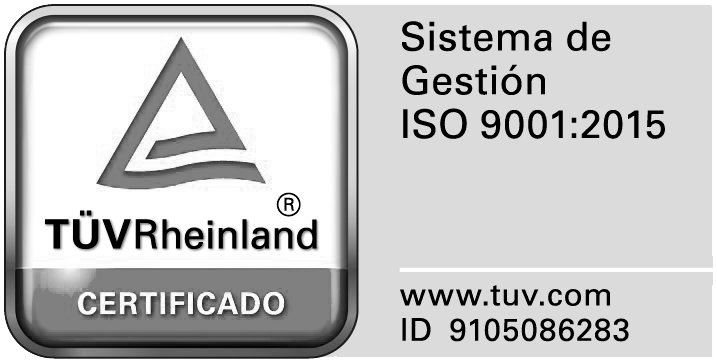
Tratamiento del cáncer de piel

Tratamiento del cáncer de piel
La clínica Teknon de Barcelona dispone de uno de los mejores equipos para el tratamiento multidisciplinar de cáncer de piel en Barcelona. En esta Unidad de Cáncer de Piel, al Dr. Garcés, especialista en dermatología de reconocido prestigio a nivel internacional en el tratamiento del tumor cutáneo utilizando técnicas de cirugía de Mohs, se une el Dr. Paloma y su equipo, expertos en cirugía plástica y reconstructiva de defectos cutáneos, y el departamento de radioterapia y oncología del Instituto Oncológico Teknon (IOT) que pone a disposición del paciente todas sus terapias de apoyo complementarias.
El tumor cutáneo es una enfermedad producida por el desarrollo de células cancerosas en cualquiera de las capas de la epidermis y se manifiesta en lesiones o heridas en la piel que no se curan, pican y van aumentando.
Se pueden distinguir dos tipos:
Es el más frecuente y se denomina no melanoma porque se forma a partir de otras células de la epidermis que no son las que acumulan el pigmento (los melanocitos). Se trata de la mayoría de los cánceres de piel, calculándose que se diagnostican dos millones de casos nuevos al año en el mundo de este tipo de cáncer.
El cáncer de piel no melanocítico se da más en las personas de piel blanca y que han pasado mucho tiempo expuestas a los rayos solares sin protección, sobre todo cuando la exposición solar tuvo lugar durante la infancia y se produjeron numerosas quemaduras. Aunque puede aparecer en cualquier parte de la dermis, lo más corriente es que aparezcan en la cara, cuello, manos y brazos.
Los carcinomas cutáneos no-melanoma son malignos, aunque tienen una baja probabilidad de que se extiendan a otras partes del cuerpo si se tratan a tiempo.
Se forma cuando los melanocitos o células que pigmentan la epidermis comienzan a crecer sin control. Puede ser agresivo al propagarse a otras partes del cuerpo en etapas avanzadas.
Aunque su frecuencia es menor que el no-melanoma, en los últimos años, la incidencia del melanoma maligno ha aumentado espectacularmente, multiplicándose por 3,3 en varones y por 2,5 en mujeres. A pesar de esto, representa menos del 3% de todos los tumores y las campañas de diagnóstico precoz han permitido que la mortalidad se reduzca un 30% desde los años setenta.
El melanoma cutáneo se puede reconocer por un cambio en el aspecto de la dermis, como una herida que no sana o una pequeña protuberancia. También puede aparecer una mancha roja, áspera o escamosa con tendencia a crecer.
Ante cualquier cambio o anormalidad de la piel, hay que acudir al médico. Éste puede extraer una muestra y analizarla (biopsia) para comprobar si es un tumor maligno o no.
Las causas que provocan el tumor cutáneo van desde la herencia genética a factores como la radiación ultravioleta, las infecciones víricas, la inmunodepresión, etc.
La exposición excesiva al sol influye en la producción de estos cánceres. Personas que trabajan en el exterior, como agricultores y marineros, presentan una mayor incidencia. Se suelen producir en la piel expuesta, frecuentemente en cabeza y cuello.
Aunque la luz solar ayuda a sintetizar las vitaminas A y D, la exposición excesiva, produzca o no quemaduras, aumenta el riesgo de desarrollar cáncer de piel, incluyendo el melanoma maligno.
Existe una correlación entre el riesgo de melanoma y la latitud. También influye el período de tiempo durante el que ha vivido una persona en países de latitudes ecuatorianas, lo que significa una exposición excesiva al sol mantenida durante un período de la vida.
No sólo influye la exposición prolongada, sino que una exposición intensa al sol, puntual, durante unas vacaciones, por ejemplo, constituye un factor de riesgo tanto de carcinoma basocelular como de melanoma.
Los melanomas difieren de los tumores malignos de la piel de tipo no melanoma con respecto al sexo, edad y localización corporal. La mayor parte de los melanomas malignos cutáneos no ocurren en zonas que reciben la dosis ultravioleta acumulada mayor.
Aunque no se conoce exactamente cuál es el esquema más peligroso de exposición al sol, algunos estudios apoyan la hipótesis de que la exposición intensa e intermitente a la radiación ultravioleta de la piel que se encuentra normalmente protegida es la responsable de la formación del melanoma.
La edad también parece influir y las quemaduras producidas por el sol antes de los 15 años aumentan el riesgo de melanoma al doble.
Sobreexposición a lámparas y cabinas bronceadoras. Las lámparas y cabinas bronceadoras son una fuente de radiación ultravioleta. Una exposición excesiva aumenta el riesgo de desarrollar cáncer de piel.
El síndrome del carcinoma basocelular nevoide es un trastorno hereditario en el que los pacientes desarrollan un gran número de carcinomas basocelulares desde la segunda década de la vida y que, finalmente, afectan a cualquier zona de la piel.
El xeroderma pigmentoso es un trastorno hereditario que se produce por una alteración en la reparación del ADN, se asocia también con la aparición de carcinomas cutáneos múltiples.
En el melanoma maligno cutáneo se ha descrito una predisposición familiar. El riesgo estimado de presentarlo es del 70% en pacientes con melanosis neurocutánea y distintos tipos de xeroderma pigmentosum, del 1% en hijos de pacientes con melanoma solitario no familiar y del 6% en familias con síndrome del nevus displásico e historia de dos o más melanomas malignos.
Aquellas personas que han sido tratadas con medicinas que les deprimen su sistema inmunológico, tienen mayor predisposición a desarrollar un melanoma.
Las personas de raza blanca de origen escocés, inglés o irlandés con el pelo rubio o rojizo, los ojos claros y abundantes pecas son especialmente susceptibles.
El melanoma es muy raro en la población negra u oriental siendo predominante, cuando se da, en zonas poco pigmentadas como las palmas y plantas y su pronóstico es peor.
La sensibilidad de la piel al sol y la dificultad para broncearse aumenta el riesgo de melanoma.
La reacción cutánea a la luz solar se relaciona con factores como la pigmentación de la piel, el número de pecas en la infancia o edad adulta y el número de nevus (formaciones parecidas a lunares y que son tumores melanocíticos benignos), constituyendo todos ellos factores de riesgo para el melanoma maligno cutáneo.
La mayor incidencia de nevus en individuos de raza blanca conduce a la idea de que la radiación ultravioleta desarrolla un papel importante en el desarrollo de nevus. Se ha comprobado la existencia de mayor número de nevus en zonas de la piel expuestas al sol que en zonas protegidas, asociándose su aumento con una mayor propensión a quemarse que a broncearse, el número de quemaduras solares, la tendencia a las pecas y el estilo de vida relacionado con una mayor exposición solar. Una persona con piel sensible al sol, más de 150 nevus melanocíticos y algún nevus displásico (con aspecto microscópico similar a las células malignas del melanoma), podría presentar 50 veces más riesgo de melanoma que otra persona sin estas características.
Aproximadamente la mitad del número de casos de melanomas se presenta en personas mayores de 50 años.
La exposición a carcinógenos, los traumatismos o cicatrices, las lesiones por radiación crónica y las infecciones virales, son algunos de los factores que predisponen la aparición del cáncer de piel.

El médico se basará en los síntomas que presente la epidermis del paciente y la historia clínica.
Cuando se sospeche la existencia de alguna anomalía, se realizará una biopsia para examinar el tejido epitelial al microscopio y el tipo de células que presenta. Dependiendo de dónde se encuentre la alteración del epitelio y del tipo que sea se pautará una clase de biopsia u otra.
Se insensibiliza la zona de piel a biopsiar con anestesia local y se raspan las capas superiores de la piel con una hoja de bisturí.
Se extrae una cuña de piel. Se realiza para tumores más profundos. Con la biopsia incisional sólo se extrae una parte del tumor para analizarlo. Con la biopsia excisional se extirpa todo el tumor. Si la extensión de la piel afectada es grande, se realizará una biopsia incisional, en un primer momento, para no deteriorar mucho la imagen de la persona.
Se utiliza una jeringuilla con una aguja fina para extraer pequeñas partículas del tumor. No se utiliza para el diagnóstico de un lunar sospechoso, pero sí para biopsiar los ganglios linfáticos cercanos a un melanoma.
Si hay signos evidentes de que el estadio del cáncer es alto, se realizarán otros exámenes para el diagnóstico de la extensión como escáneres, análisis o pruebas de medicina nuclear.
Los tumores cutáneos son tratados por un equipo de especialistas en enfermedades de la piel expertos en dermatología oncológica y quirúrgica, así como en cirugía plástica de reconstrucción.
En la Unidad de Cáncer de Piel de la clínica Teknon de Barcelona, el cirujano plástico del equipo, el Dr. Paloma, está especializado en tumores cutáneos y es el encargado de realizar las cirugías reparadoras de las lesiones producidas en la dermis mediante trasplantes o injertos de tejido epitelial, así como de extirpar las células cancerosas .
La mayoría de los carcinomas basocelulares y de células escamosas se curan mediante cirugía menor. Existen varios tipos de cirugía que se emplearán según sea la localización y el tipo de tumor.
Escisión simple: el tumor y una porción de tejido circundante se extirpan mediante bisturí. Luego se cosen los bordes, manteniendo la mejor estética posible.
Criocirugía: se utiliza nitrógeno líquido para congelar y así destruir las células malignas. En la actualidad está indicada en las queratosis actínicas (lesiones precancerosas) y en algunos carcinomas superficiales.
Cirugía de Mohs: este procedimiento quirúrgico utilizado para tratar el cáncer de piel no melanoma (sobre todo el cáncer basocelular de la cara) consiste en extraer capas individuales de tejido canceroso y examinarlas una por una al microscopio para valorar si está totalmente extirpada, tanto en superficie como en profundidad. Esta técnica permite ahorrar el máximo de tejido sano alrededor. Esta cirugía se emplea para el tratamiento de tumores de comportamiento agresivo, localizados en determinadas áreas críticas y que han reaparecido después de otros tratamientos.
Cirugía por láser: se utilizan los rayos láser para vaporizar las células cancerosas. Esta técnica se emplea en el carcinoma basocelular muy superficial y en el carcinoma de células escamosas in situ.
Cirugía de ganglios linfáticos: si los ganglios cercanos al cáncer están afectados habrá que extirparlos mediante cirugía. Hoy día se emplea la técnica del ganglio centinela en muchos casos de melanoma.
Existen diversas formas de administración y numerosos tratamientos, cuyas formulaciones avanzan rápidamente a medida que la ciencia progresa.
Cuando se emplean de forma tópica, los fármacos llegan a las células más cercanas de la superficie de la piel por lo que este modo de empleo se utilizará sólo para las condiciones premalignas o malignas superficiales de tipo “no melanoma” . Este tipo de medicamento enrojece la zona donde se aplica, y la hace más sensible al sol, por lo que habrá que protegerla durante unas semanas del sol.
Si el cáncer se encuentra en una etapa avanzada se empleará la quimioterapia sistémica, es decir, aquella que llega a todas las partes del organismo.
Consiste en el empleo de rayos de alta energía, como rayos X, para destruir o disminuir el número de células cancerosas. Es un tratamiento local. Se desarrolla a lo largo de unos días, y la paciente va de forma ambulatoria a la clínica o sala donde se realice la radioterapia; no tiene que estar ingresada para ello.
En sí, el tratamiento dura unos minutos. No es doloroso, sino que es algo parecido a una radiografía sólo que la radiación es mayor y está concentrada en la zona afectada.
La radioterapia se utiliza en este tipo de cáncer en aquellos pacientes que no pueden someterse a cirugía por su estado general, que las características de la lesión lo indiquen o como tratamiento paliativo o coadyuvante. En principio, las personas de edad muy avanzada pueden tener problemas para ser intervenidos quirúrgicamente. Así el segundo tratamiento de elección sería la radioterapia.
Este tratamiento puede curar aquellos tipos de cáncer que se encuentre en estadios bajos. También puede retrasar el crecimiento de aquellos tumores más avanzados.
La radioterapia también puede utilizarse como ayuda al tratamiento de cirugía. Tras ésta, y para asegurar que no se quede ninguna célula cancerosa, se somete al paciente a un tratamiento con radioterapia. También se puede utilizar para radiar las metástasis en otros órganos.
Actualmente existe un nuevo tratamiento de sofisticado mecanismo para el tratamiento del cáncer de piel “no melanoma”. Se trata de aplicar un producto tópico, en forma de crema, que actúa como fotosensibilizador (el ácido aminolevulínico). Este producto es captado de modo específico por las células tumorales en unas dos o tres horas. Tras este tiempo se somete al paciente a una luz especial, de una longitud de onda determinada.
Las células tumorales sensibilizadas por el ácido son destruidas cuando se iluminan durante unos minutos. Este procedimiento se debe repetir aproximadamente al mes.
Está indicado para las queratosis actínicas, los carcinomas basocelulares superficiales y la enfermedad de Bowen (carcinoma escamoso in situ).
Los estadios localizados del melanoma tienen unas posibilidades elevadas de ser curados con cirugía. El empleo de ésta para los diseminados se utilizará con intención paliativa, es decir, para disminuir los síntomas.
La lesión primaria debe ser extirpada, incluyendo piel, tejido celular subcutáneo hasta la fascia muscular. Como para obtener el diagnóstico se habrá realizado previamente una biopsia escisional, deberá cortarse por la cicatriz con un margen amplio, hasta tres centímetros dependiendo de los valores pronóstico (fundamentalmente las escalas de Breslow y Clark).
Para los melanomas menores de 0,76 mm, será suficiente extirpar un margen de 1 cm.
Cuando hay ganglios afectados, deberán ser extirpados. Esto se realizará cuando se evidencie una invasión de los ganglios.
Esta técnica puede realizarse según el criterio médico, dependiendo de los factores pronósticos. Consiste en averiguar qué ganglio es el que se drena fluido linfático a la zona del melanoma y analizarlo. Para ello lo que se hace es inyectar una sustancia, coloreada o con un componente radioactivo, en la zona del melanoma. Al cabo de un tiempo, se podrá observar coloreado o con el compuesto radioactivo aquel ganglio que haya absorbido la sustancia y que será el que pueda contener mayor número de células cancerosas, si el cáncer se ha extendido. Cuando se ha localizado el ganglio, se toma una muestra y se analiza al microscopio. Si presenta células cancerosas, se extirpará. También se extirparán los ganglios linfáticos restantes de esa zona.
Si se ha evidenciado la existencia de metástasis en otros órganos, puede realizarse una cirugía, aunque no tenga como objetivo la curación. A veces la extirpación de metástasis en otros órganos aumenta el tiempo de vida del paciente o, por lo menos, mejora los síntomas que éste presenta.
La quimioterapia sistémica se emplea como tratamiento paliativo de los síntomas.
Se utiliza después del tratamiento de cirugía en algunas metástasis dérmicas, cerebrales, intestinales u óseas.
El tratamiento con un solo fármaco o con combinación de ellos es poco eficaz y las tasas de respuesta no superan el 30%. El tiempo de curación es poco. Aun así se siguen realizando investigaciones combinando varios fármacos.
Los medicamentos que se utilizan con más frecuencia son la dacarbacina (DTIC), la carmustina (BCNU), el taxol, el platino, la vinblastina y la vincristina.
Se pueden emplear distintas combinaciones de medicamentos, recientemente se han descrito resultados alentadores con la asociación de DTIC, platino, BCNU y tamoxifeno.
Algunas combinaciones de quimioterápicos se pueden asociar a medicamentos de inmunoterapia como son el interferón, la interleukina-2 y los anticuerpos monoclonales.
Mejora un tanto el pronóstico de los pacientes operados de melanoma, disminuyendo el riego de aparición de metástasis. Es un tratamiento inyectable de duración entorno a un año y con un cierto número de efectos adversos, por lo que se suele reservar para los casos de melanoma de mayor riesgo, como aquellos más profundos o con afectación de los ganglios linfáticos.

NÚMERO DE COLEGIADO: 64592
ESPECIALIDAD: Cirugía Plástica, Reparadora y Estética
SOCIEDADES CIENTÍFICAS: Miembro de la Sociedad Española de Cirugía Plástica, Reparadora y Estética (SECPRE)
SABER MÁS QUIERO PEDIR CITA
Solicita una visita a través de este formulario o llama al




